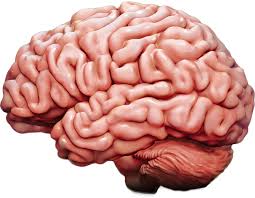
New Breakthrough in Tuberculosis Treatment: Novel Method Delivers TB Drugs Directly to the Brain
In a major advancement, researchers have developed an innovative method to deliver tuberculosis (TB) drugs directly to the brain, bypassing the formidable blood-brain barrier (BBB). This breakthrough offers hope for effectively treating Central Nervous System Tuberculosis (CNS-TB), a life-threatening form of TB with a high mortality rate.
CNS-TB occurs when tuberculosis infects the brain, leading to severe complications and, in many cases, death. One of the primary challenges in treating CNS-TB is the blood-brain barrier, a protective shield that prevents harmful substances from entering the brain. Unfortunately, it also blocks most TB medications, rendering traditional treatments less effective.
Typically, TB treatments rely on oral anti-TB drugs, which fail to penetrate the brain adequately due to the BBB, resulting in suboptimal drug concentrations in the cerebrospinal fluid. Recognizing this limitation, researchers sought a new approach to enhance drug delivery directly to the brain.
Scientists at the Institute of Nano Science and Technology (INST) in Mohali, under the Department of Science and Technology (DST), have now introduced a solution. Led by Rahul Kumar Verma and his team, including Krishna Jadhav, Agrim Jhilta, Raghuraj Singh, Eupa Ray, Vimal Kumar, Awadh Yadav, and Amit Kumar Singh, the group developed a novel drug delivery system using chitosan, a natural, biocompatible material, to create nanoparticles capable of bypassing the BBB.
These nanoparticles, formed into slightly larger clusters called nano-aggregates, are designed for nasal delivery. The nose-to-brain (N2B) delivery method exploits the olfactory and trigeminal nerve pathways, allowing the drug to reach the brain without being blocked by the BBB. The nano-aggregates are loaded with potent TB drugs, such as isoniazid (INH) and rifampicin (RIF), ensuring that they reach the infection site more effectively.
The use of chitosan is key to the success of this method. Known for its mucoadhesive properties, chitosan sticks to the nasal mucosa, allowing the nano-aggregates to remain in place longer, which in turn increases drug absorption. The nano-aggregates also prolong the drug release, enhancing its therapeutic effectiveness.
The research team utilized a spray-drying process to stabilize the nano-aggregates, making them easy to administer intranasally and ensuring efficient absorption into the brain. In lab tests, these nano-aggregates significantly improved drug delivery, with the treatment delivering up to 1,000 times more medication into brain cells compared to traditional TB treatments.
When tested on mice infected with TB, the nasal delivery method dramatically reduced the bacterial load in the brain, achieving almost a 1,000-fold reduction compared to untreated mice. This groundbreaking study, published in the journal Nanoscale (Royal Society of Chemistry), marks the first time TB drugs have been successfully delivered through the nose to treat brain TB.
Beyond effectively targeting the infection, the treatment also reduced inflammation in the brain, a critical factor in the recovery process. This innovation could revolutionize CNS-TB treatment, leading to faster recovery and improved survival rates for patients.
The potential of this delivery system extends far beyond TB treatment. Researchers believe it could also be used to treat other brain-related conditions, such as neurodegenerative diseases like Alzheimer’s and Parkinson’s, brain tumors, and epilepsy, by enabling more efficient drug delivery to the brain.
This breakthrough represents a significant leap forward in the fight against brain TB and could transform the way other brain diseases are treated in the future.